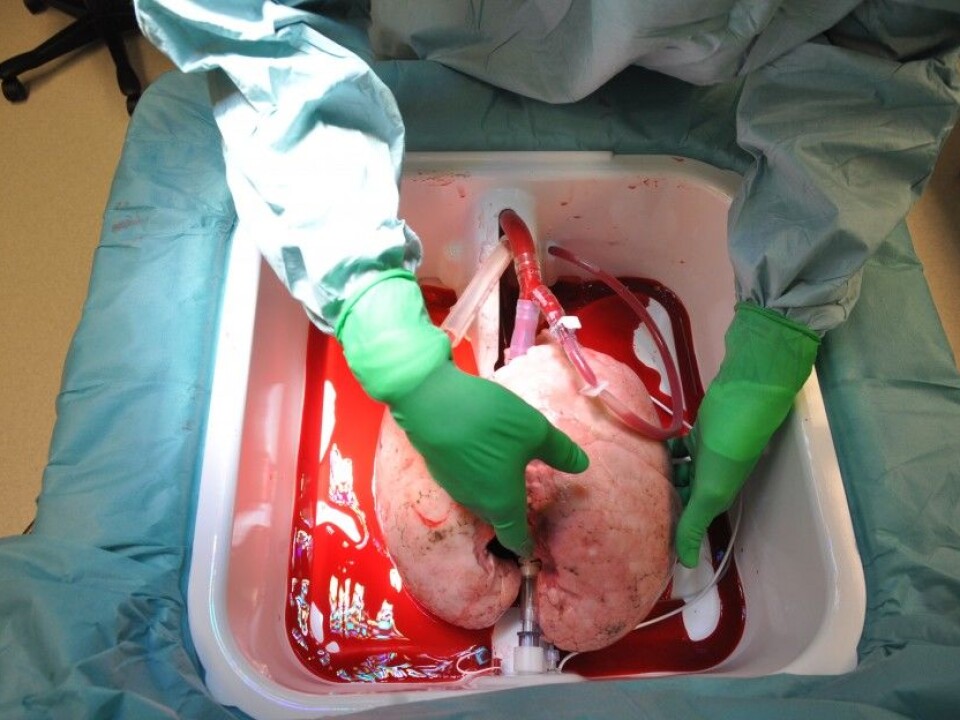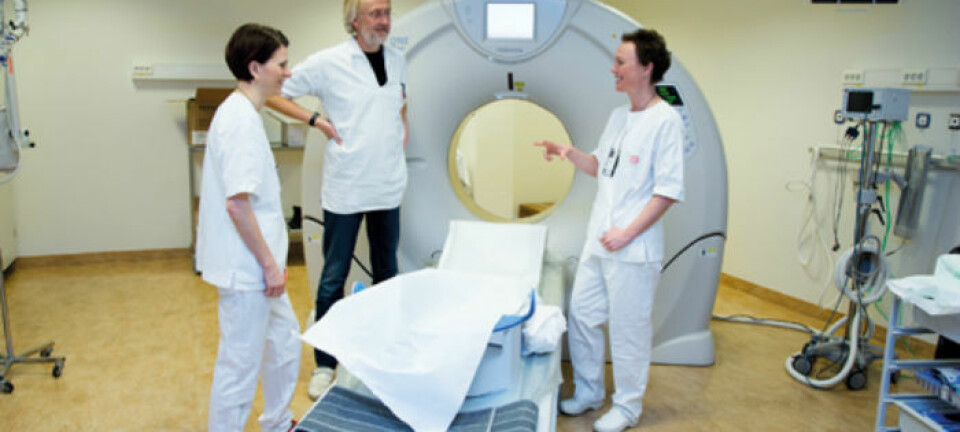
Salvaged donor lungs can save lives
Donor lungs once thought unsuitable for transplant can be salvaged for use by a new method after special treatment in a purpose-built heart and lung machine unit.
Denne artikkelen er over ti år gammel og kan inneholde utdatert informasjon.
Lungs that can be transplanted are in short supply in many countries. As an example, Norway, which has a population of five million, has 50 end-stage lung disease patients on waiting lists for lung transplants every year. Twenty percent of them die while waiting for new lungs.
Only one out of three donor lungs are currently deemed healthy and functional enough to transplant into patients who need the organs.
Trial operations
Organs from a dead person, including lungs, are usually kept chilled to prevent degradation. This is called cold static preservation. But a special configuration of heart-lung machinery for what is called Ex Vivo Lung Perfusion (EVLP), keeps lungs oxygenated for hours while surgeons monitor their functionality. Lungs that previously would have been discarded have been shown to be viable, life-saving organs.
In new trial operations, 18 double and four separate lungs were transplanted after being tested, perfused and monitored with the machine.

The surgeons at the University of Gothenburg’s Sahlgrenska Academy took lungs that normally would be considered substandard and connected them to an EVLP unit which monitored and regulated blood circulation, oxidation and other functions.
The tests in Gothenburg showed that most of the lungs started functioning normally in the special heart-lung machine and were assessed by researchers as suitable for use.
The lungs were transplanted to 22 severely ill patients.
As good as healthy lungs
Lungs are routinely discarded from donors who are too old, have smoked or have had lung diseases. But these lungs were found to be usable for transplants.
The researchers compared the 22 patients who had received what otherwise would have been rejected lungs with a control group of patients who had undergone transplantations using conventionally prepared lungs. No differences were found between the two groups of patients with regard to function, complications and survival.
”Our conclusion is the method works and that we can use it to raise the number of useful donated lungs,” says Wallinder.
------------
Read the Norwegian version of this article at forskning.no
Translated by: Glenn Ostling

































